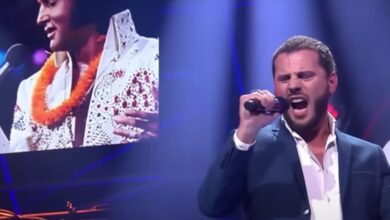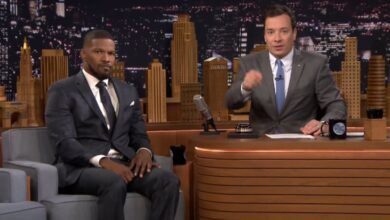Dave & Ansell Collins’ “Double Barrel” Fires Up Global Charts and Ignites Reggae’s International Rise in 1971
When “Double Barrel” exploded onto the airwaves in early 1971, few listeners outside Jamaica had ever heard anything quite like it. Its infectious rhythm, energetic delivery, and quirky shouts created a song that felt both futuristic and rooted in the streets of Kingston. Performed by Jamaican duo Dave & Ansell Collins, “Double Barrel” shot to No. 1 on the UK Singles Chart, making history as one of the first reggae songs to reach such heights internationally. It was more than a catchy novelty—it was a signal flare for reggae’s impending global takeover.
Dave Barker, born David John Crooks in Kingston, had spent his early musical years bouncing between ska and R&B groups. With a gospel-honed voice and a love for American soul, he brought a sharp vocal edge to the Jamaican scene. Ansell Collins, on the other hand, was a gifted keyboardist and studio session player, renowned for his work behind the scenes at the legendary Studio One and Treasure Isle. Together, they were an unlikely but electric pairing—Barker’s flamboyant toasting and Collins’ deep musical intuition created a chemistry that made “Double Barrel” impossible to ignore.
The origins of the song were as spontaneous as they were serendipitous. Collins had written the instrumental groove—an infectious rhythm layered with bouncing organ stabs and laid-back bass—and needed a vocal to match its energy. Enter Dave Barker, who didn’t so much sing on the track as shout over it, launching into the now-iconic intro: “I am the magnificent!” That bold declaration, followed by rapid-fire bursts of soul-tinged talking and rhythmic interjections, gave “Double Barrel” its wild charm. The pair didn’t aim to make a global hit—they were just making a song that felt good in the moment.
The recording was produced by the legendary Winston Riley, a foundational figure in Jamaican music who also founded the Techniques and later played a key role in the development of dancehall. Recorded in Kingston’s Dynamic Sounds studio, “Double Barrel” was a sonic experiment: a mixture of ska’s bounce, reggae’s bass, and American funk’s flair. It was among the earliest examples of what would later become known as deejay style—the art of speaking or toasting over a rhythm track, which would eventually evolve into modern-day rap and dancehall.
Upon release in Jamaica, the song was an immediate street hit. But its international breakout came after Trojan Records picked it up for distribution in the UK. The British audience, still fresh from embracing ska and rocksteady through artists like Desmond Dekker and Millie Small, was primed for something new. “Double Barrel” had that edge—new but familiar, chaotic but catchy. It topped the UK Singles Chart in May 1971 and stayed there for two weeks. It also charted in the Netherlands and Germany, and even made a brief appearance on the U.S. Billboard Hot 100.
Culturally, the song had a massive impact. It introduced toasting—a style previously confined to Jamaican dancehalls—to an entirely new audience. While Americans were getting into funk and British rock was undergoing a progressive evolution, “Double Barrel” brought something raw, rhythmic, and rebellious. It wasn’t polished, but it pulsed with life. That spirit of improvisation and vocal playfulness would go on to influence early hip-hop pioneers in New York, particularly in the Bronx, where Jamaican sound system culture had taken root.
For Dave Barker, the song opened doors to touring and collaboration. While he would never again top the charts in the same way, his vocal style became a prototype for the dancehall toasters and rap MCs that followed. Ansell Collins, meanwhile, leveraged the song’s success to become one of the most in-demand session musicians in reggae, playing on tracks by Jimmy Cliff, Toots and the Maytals, and later becoming part of Sly & Robbie’s Revolutionaries band.
The track also marked a turning point in reggae’s exportability. Up until that moment, reggae had seen scattered success abroad, often limited to novelty status. But “Double Barrel” proved that Jamaican artists could chart alongside rock and pop legends in the UK. This paved the way for the next wave of stars—Bob Marley, Peter Tosh, Burning Spear—whose music carried not just rhythm but also political and spiritual messages. Without “Double Barrel,” the reception to those more complex records might have been slower.
Other artists took note of its success and began experimenting with the format. The concept of rhythmic speech over instrumental backings was picked up by DJs, MCs, and funk bands alike. While the Sugarhill Gang and Grandmaster Flash are rightly credited with shaping hip-hop in the late ’70s, there’s no denying that tracks like “Double Barrel” planted some of the genre’s earliest seeds. In fact, Kool Herc—the Bronx DJ widely considered the father of hip-hop—often cited Jamaican toasting as a foundational influence.
Covers of “Double Barrel” have been rare but respectful. In the 1990s and 2000s, DJs and remix artists sampled the track’s iconic intro for club mixes and jungle tracks. Its legacy lives more in influence than in imitation—most artists who follow in its footsteps have simply borrowed the attitude, the approach, the rhythm, and the sense of joyful unpredictability it embodied.
At the time of the song’s success, Jamaica was entering a turbulent period politically, and music was becoming a powerful voice for the people. While “Double Barrel” wasn’t overtly political, its very presence on international charts was symbolic—a declaration that Jamaica’s voice, even in its rawest form, demanded to be heard.
In the decades since its release, “Double Barrel” remains a touchstone in reggae history. It appears on nearly every comprehensive reggae anthology and is frequently cited by music historians when discussing the birth of deejay culture. It continues to receive airplay on retro and specialty radio stations and is sampled occasionally by artists wanting to capture that early reggae energy.
Its lasting impact lies not just in its sound, but in its spirit. “Double Barrel” was fearless, fun, and utterly original. It wasn’t trying to fit into any mold—it created its own. That sense of innovation would ripple outward, helping reshape the possibilities of what Jamaican music—and by extension, global music—could become.
Though neither Dave Barker nor Ansell Collins became household names worldwide, their explosive collaboration left an undeniable mark. “Double Barrel” isn’t just remembered as a No. 1 hit; it stands as one of reggae’s first global ambassadors—a rhythmic cannon shot that echoed far beyond the dancehalls of Kingston.



